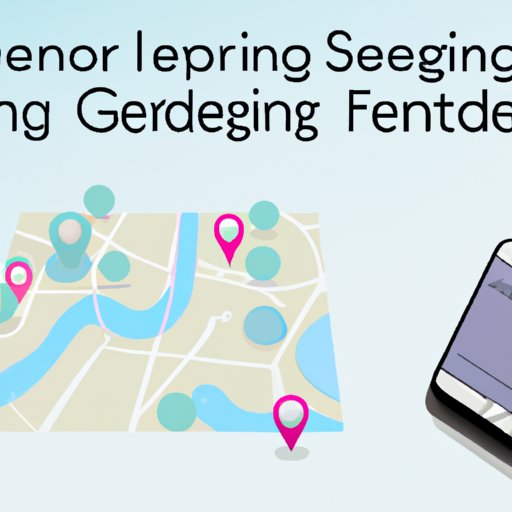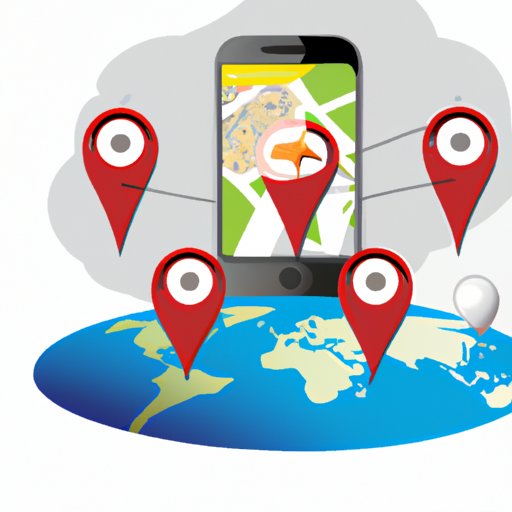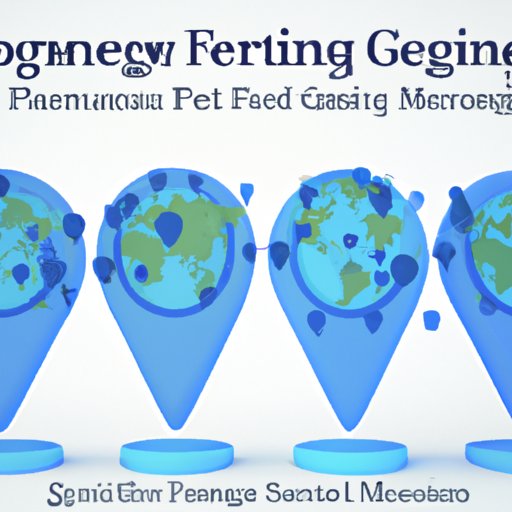Introduction
Geofencing technology is an advanced location-based marketing technique that businesses can use to target customers within a specific geographic area. It involves creating virtual boundaries, or “geofences”, around geographical areas, such as neighborhoods, stores, or events. When a user enters the geofenced area, they are sent targeted messages or ads related to their current location.
Geofencing technology is gaining traction in the business world due to its ability to provide highly targeted marketing campaigns, increased customer engagement, better analytics, and cost efficiency. In this article, we will explore the benefits of geofencing technology, how it works, its impact on businesses, and a comprehensive guide to leveraging it for maximum results.
Exploring the Benefits of Geofencing Technology
Geofencing technology has numerous advantages over traditional marketing techniques. It provides businesses with the opportunity to create more effective, targeted campaigns that reach the right people at the right time. Here are some of the key benefits of geofencing technology:
Improved Targeting
Geofencing technology allows businesses to send highly targeted messages or ads to users within a specific geographic area. According to a 2018 survey by Salesforce, 70% of consumers said they were more likely to shop with a brand that provided personalized experiences. Geofencing technology enables businesses to personalize their campaigns by sending location-specific messages or ads to customers who enter the geofenced area.
Increased Customer Engagement
By leveraging geofencing technology, businesses can increase customer engagement by sending timely, relevant messages or ads to customers within the geofenced area. This helps to build customer loyalty and trust in the brand, which can lead to increased sales and revenue.
Better Analytics
Geofencing technology also provides businesses with valuable insights into customer behavior and preferences. By tracking customer movements within the geofenced area, businesses can gain valuable insights into which products or services are most popular among their target audience. This information can then be used to optimize future marketing campaigns.
Cost Efficiency
Geofencing technology is also cost-effective, as it eliminates the need to pay for expensive advertising campaigns. Instead, businesses can focus their budget on creating effective geofences and targeting customers within those areas. This helps to maximize ROI and ensure that campaigns are efficient and cost-effective.
How Geofencing Technology Works and Its Impact on Businesses
Geofencing technology works by creating virtual boundaries, or “geofences”, around geographical areas. When a user enters the geofenced area, they are sent targeted messages or ads related to their current location. Let’s take a closer look at how geofencing technology works and its impact on businesses.
Components of a Geofence
A geofence consists of three main components: a trigger point, a radius, and an action. The trigger point is the location that initiates the geofencing process. It can be a physical address, a GPS coordinate, a venue, or any other location. The radius is the distance from the trigger point within which the geofence is active. The action is the message or ad that is sent to users when they enter the geofenced area.
Types of Geofences
There are two main types of geofences: static and dynamic. Static geofences remain active all the time, while dynamic geofences can be activated and deactivated based on certain criteria. For example, a dynamic geofence could be set to activate only during certain hours of the day.
Examples of Business Use Cases
Geofencing technology can be used for a variety of business purposes. For example, businesses can use geofencing technology to send location-specific offers to customers who enter the geofenced area. They can also use it to track customer movement and gain valuable insights into customer behavior. Additionally, businesses can use geofencing technology to monitor the performance of their campaigns and optimize them for maximum ROI.

A Comprehensive Guide to Geofencing Technology
Now that you have a better understanding of how geofencing technology works and its benefits, let’s take a look at how businesses can leverage it for maximum results. Here is a comprehensive guide to geofencing technology:
Setting Up a Geofence
The first step in leveraging geofencing technology is setting up a geofence. This involves selecting a trigger point, setting a radius, and deciding on an action. Once the geofence is set up, businesses can begin targeting customers within the geofenced area.
Managing Geofences
Businesses should also consider managing their geofences to ensure that they are effective. This involves regularly reviewing the geofence parameters, making adjustments as needed, and optimizing the geofence for maximum performance.
Monitoring Performance
Finally, businesses should monitor the performance of their geofences to ensure that they are achieving the desired results. This involves regularly analyzing the data collected from the geofences and making adjustments to improve the performance of the geofences.

The Growing Popularity of Geofencing Technology
Geofencing technology is becoming increasingly popular in the business world due to its ability to provide highly targeted marketing campaigns, increased customer engagement, better analytics, and cost efficiency. Here are some of the reasons for its rise in popularity:
Reasons for its Rise in Popularity
As mentioned earlier, geofencing technology provides businesses with the opportunity to create more effective, targeted campaigns that reach the right people at the right time. Additionally, it is an affordable and cost-effective solution that can help businesses maximize ROI. Furthermore, businesses can use geofencing technology to gain valuable insights into customer behavior, which can be used to optimize future campaigns.
Growing Adoption in Different Industries
Geofencing technology is being adopted in a variety of industries, including retail, hospitality, transportation, healthcare, and more. According to a study by MarketsandMarkets, the global geofencing market is projected to grow from $2.45 billion in 2019 to $7.95 billion by 2024, at a compound annual growth rate (CAGR) of 26.5%.

Understanding the Pros and Cons of Geofencing Technology
Despite its many advantages, geofencing technology does have some drawbacks. Let’s take a look at the pros and cons of geofencing technology:
Advantages
- Provides businesses with the opportunity to create highly targeted campaigns
- Increases customer engagement
- Provides businesses with valuable insights into customer behavior
- Cost-effective solution
Disadvantages
- Requires significant setup and maintenance
- May not be effective in all locations
- Data privacy concerns
- Potential legal implications
How Companies are Leveraging Geofencing Technology for Maximum Results
In order to get the most out of geofencing technology, businesses must understand how to leverage it for maximum results. Here are some strategies for optimizing performance and best practices for implementing geofencing technology:
Strategies for Optimizing Performance
- Develop a clear strategy and goals
- Identify target audiences and areas
- Set up and manage geofences effectively
- Optimize geofences for maximum performance
- Monitor performance and adjust as needed
Best Practices for Implementing Geofencing Technology
- Understand the legal implications of geofencing
- Ensure data privacy and security
- Educate employees and customers about geofencing
- Test geofences before launching campaigns
- Measure success and adjust strategies accordingly
Conclusion
Geofencing technology is a powerful tool that businesses can use to target customers within a specific geographic area. It provides businesses with the opportunity to create more effective, targeted campaigns that reach the right people at the right time. Additionally, it provides businesses with valuable insights into customer behavior and cost efficiency. By following the strategies outlined in this article, businesses can leverage geofencing technology for maximum results.
(Note: Is this article not meeting your expectations? Do you have knowledge or insights to share? Unlock new opportunities and expand your reach by joining our authors team. Click Registration to join us and share your expertise with our readers.)
